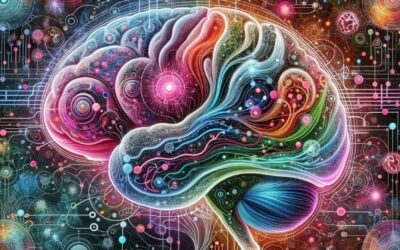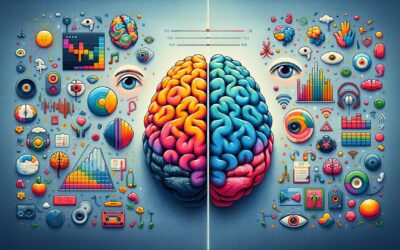- The Neuroscience of Motivation and Engagement in Learning
- Understanding the Neuroscience of Motivation and Engagement
- Real-Life Examples
- Actionable Insights for Enhanced Learning
- Take Action: Unlock Your Learning Potential
- Why Should You Care?
- Key Takeaways
- Keywords and Definitions
- Frequently Asked Questions
- How can educators leverage the neuroscience of motivation and engagement in their teaching practices?
- Are there differences in how motivation and engagement manifest across different age groups or demographics?
- Can external factors, such as environmental stimuli or peer influence, impact motivation and engagement in learning?
- Myth Buster
- Let’s Talk: Discussion Questions
The Neuroscience of Motivation and Engagement in Learning
Have you ever wondered what drives us to learn and excel in various aspects of life? The answer lies within the intricate workings of our brains. Welcome to the captivating realm of the neuroscience of motivation and engagement in learning, where we’ll unravel the mysteries behind what makes us tick and how we can optimize our learning potential.
Understanding the Neuroscience of Motivation and Engagement
Let’s start with the basics: what exactly is motivation, and why is it crucial for learning? Motivation is the internal drive that propels us to pursue goals, overcome obstacles, and achieve success. In the context of learning, it plays a pivotal role in shaping our attitudes, behaviors, and cognitive processes. When we’re motivated, our brains are primed for optimal learning, with heightened attention, retention, and cognitive flexibility.
Now, let’s dive deeper into the neuroscience behind motivation and engagement. Our brains are incredibly complex organs, consisting of billions of neurons that form intricate networks responsible for various functions, including learning and memory. When we engage in learning activities, neurotransmitters such as dopamine, serotonin, and norepinephrine are released, creating a state of heightened arousal and receptivity.
Real-Life Examples
To illustrate the neuroscience of motivation and engagement in action, let’s consider the following scenarios:
- The Power of Intrinsic Motivation: Imagine a student who is passionate about astronomy. Their intrinsic love for the subject fuels their curiosity and drives them to explore the cosmos through books, documentaries, and stargazing. In this case, their intrinsic motivation serves as a powerful catalyst for learning, enhancing their engagement and retention of astronomical concepts.
- Gamification in Education: Many educational platforms and apps leverage the principles of gamification to enhance motivation and engagement. By incorporating elements such as rewards, challenges, and progress tracking, these tools activate the brain’s reward pathways, making learning feel more enjoyable and rewarding.
- Personalized Learning: Personalized learning experiences cater to individuals’ unique interests, preferences, and learning styles, tapping into their intrinsic motivation and maximizing engagement. For example, a language learning app that allows users to choose topics relevant to their lives and interests can enhance motivation and retention of vocabulary and grammar.
Actionable Insights for Enhanced Learning
Now that we understand the neuroscience of motivation and engagement, how can we apply this knowledge to optimize our learning experiences? Here are some actionable insights:
- Set Meaningful Goals: Establish clear, achievable goals that align with your interests and aspirations. Break them down into smaller milestones to maintain motivation and track progress along the way.
- Tap into Intrinsic Motivation: Identify activities and topics that genuinely interest and inspire you. By tapping into your intrinsic motivation, you’ll naturally feel more engaged and enthusiastic about learning.
- Embrace Challenges: Embrace challenges as opportunities for growth rather than obstacles to be avoided. Challenge yourself to step outside your comfort zone and tackle new subjects or skills that pique your curiosity.
- Seek Feedback and Support: Solicit feedback from peers, mentors, or educators to gain valuable insights and perspective on your learning journey. Surround yourself with a supportive community that encourages growth and celebrates achievements.
Take Action: Unlock Your Learning Potential
As you embark on your learning journey, remember that understanding the neuroscience of motivation and engagement can serve as a powerful tool for unlocking your full potential. Whether you’re a student, educator, or lifelong learner, harnessing the power of brain science can lead to enhanced motivation, engagement, and ultimately, success. So, take action today by applying these insights to your learning endeavors and watch as you unleash the boundless possibilities that lie within your brain.
Let’s embark on this transformative journey together and unlock the doors to a world of endless learning possibilities. Your brain is waiting to be unleashed – are you ready to take the first step?
Why Should You Care?
Understanding the neuroscience of motivation and engagement in learning is vital for anyone seeking to enhance their educational experiences and achieve their goals. By grasping the underlying mechanisms that drive our motivation and engagement, individuals can unlock their full learning potential, leading to improved academic performance, career advancement, and personal growth. Moreover, this knowledge empowers educators to design more effective teaching strategies that cater to students’ diverse learning needs and motivations, ultimately fostering a culture of lifelong learning and success.
Key Takeaways
- Motivation and engagement are essential components of the learning process, influencing our attitudes, behaviors, and cognitive processes.
- The neuroscience of motivation and engagement reveals the intricate workings of the brain and the role of neurotransmitters in shaping our learning experiences.
- Real-life examples demonstrate how intrinsic motivation, gamification, and personalized learning can enhance engagement and learning outcomes.
- Actionable insights, such as setting meaningful goals and embracing challenges, can help individuals optimize their learning experiences and unlock their full potential.
Keywords and Definitions
- Neuroscience: The scientific study of the nervous system, including the brain, neurons, and neurotransmitters, and their roles in behavior, cognition, and emotion.
- Motivation: The internal drive or desire that energizes and directs behavior towards achieving goals or fulfilling needs.
- Engagement: The level of involvement, attention, and enthusiasm individuals exhibit when participating in an activity or task.
- Learning: The process of acquiring knowledge, skills, or understanding through study, experience, or instruction.
- Neurotransmitters: Chemical messengers that transmit signals between neurons in the brain and regulate various physiological and cognitive functions.
- Intrinsic Motivation: Motivation that arises from within an individual, driven by personal interest, enjoyment, or satisfaction derived from the activity itself.
- Gamification: The application of game design elements, such as rewards, challenges, and competition, to non-game contexts, such as education or productivity, to increase engagement and motivation.
- Personalized Learning: An educational approach that tailors instruction, content, and pacing to meet individual students’ unique needs, interests, and learning styles.
- Goals: Specific, measurable objectives or outcomes that individuals strive to achieve, providing direction and motivation for their actions and efforts.
- Feedback: Information or guidance provided to individuals regarding their performance or progress towards achieving a goal or completing a task, often used to facilitate learning and improvement.
Frequently Asked Questions
How can educators leverage the neuroscience of motivation and engagement in their teaching practices?
Educators can incorporate strategies such as providing meaningful feedback, offering choice and autonomy, and creating a supportive learning environment to enhance motivation and engagement among students.
Are there differences in how motivation and engagement manifest across different age groups or demographics?
Yes, motivation and engagement can vary based on factors such as age, cultural background, and individual preferences. Understanding these differences can inform tailored approaches to teaching and learning.
Can external factors, such as environmental stimuli or peer influence, impact motivation and engagement in learning?
Absolutely. External factors, such as the learning environment, social interactions, and incentives, can significantly influence individuals’ motivation and engagement levels, highlighting the importance of creating conducive learning environments.
Myth Buster
Myth: Motivation is solely driven by external rewards or incentives.
Reality: While external rewards can influence motivation, intrinsic factors such as personal interest, curiosity, and satisfaction derived from the activity itself play a significant role in driving long-term motivation and engagement.
Let’s Talk: Discussion Questions
- How do you personally experience motivation and engagement in your learning endeavors?
- Have you ever encountered challenges or barriers that affected your motivation to learn? How did you overcome them?
- What strategies or techniques have you found effective in enhancing motivation and engagement in learning, whether as a student or educator?
- How can we create learning environments that foster intrinsic motivation and engagement for all learners, regardless of their backgrounds or learning styles?
Share your thoughts and experiences in the comment section below! Let’s continue the conversation and learn from each other’s insights and perspectives.










0 Comments